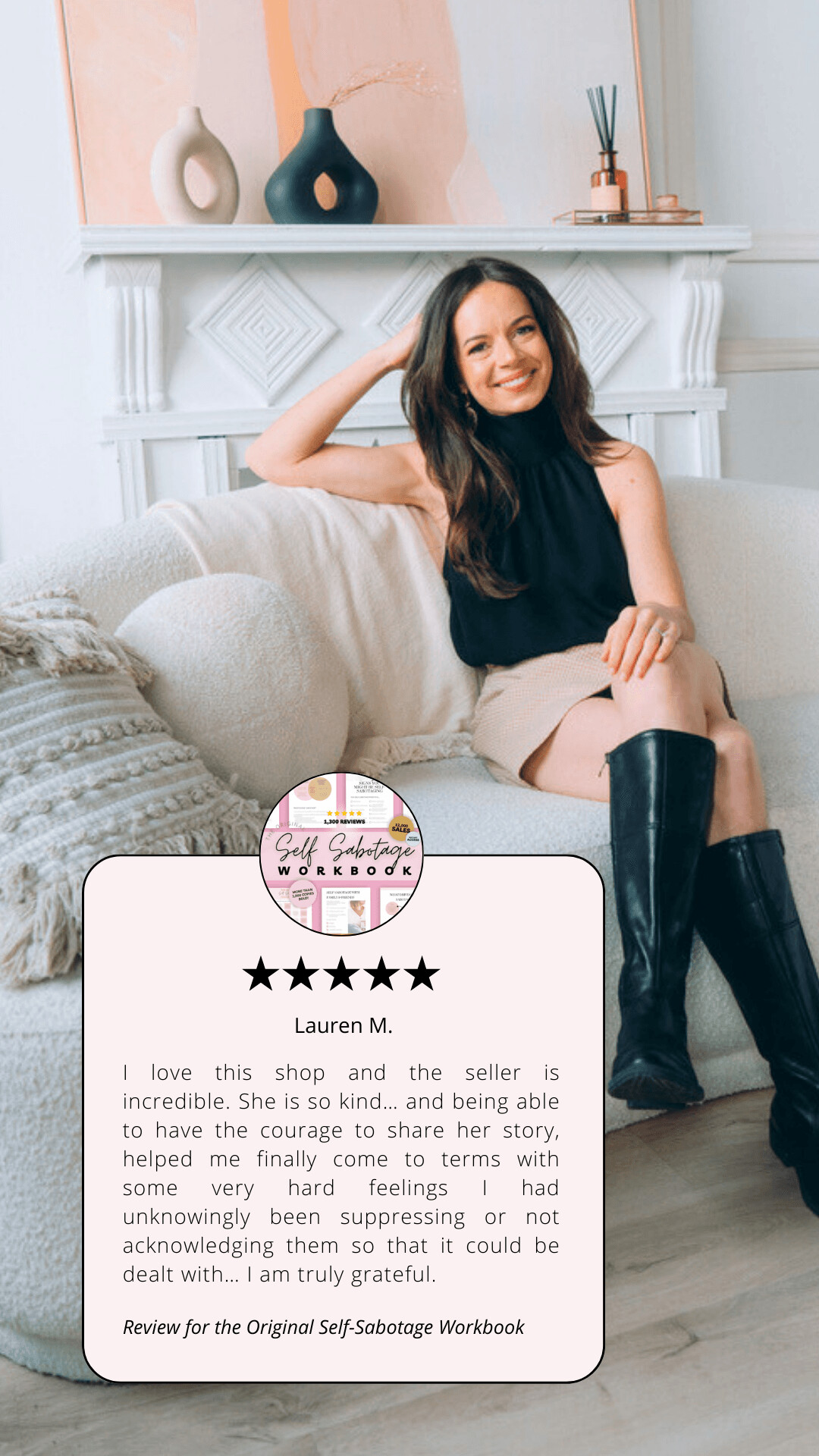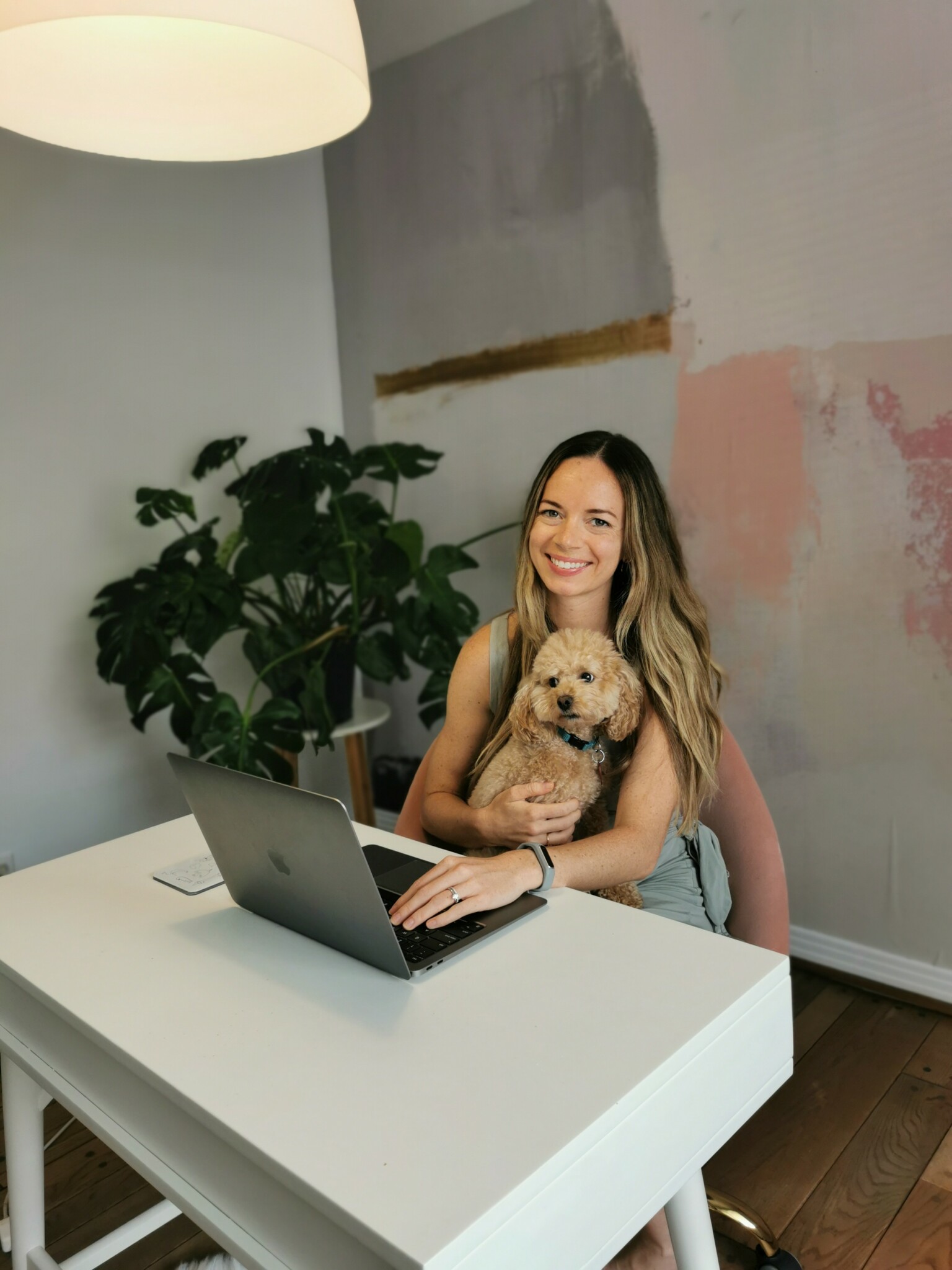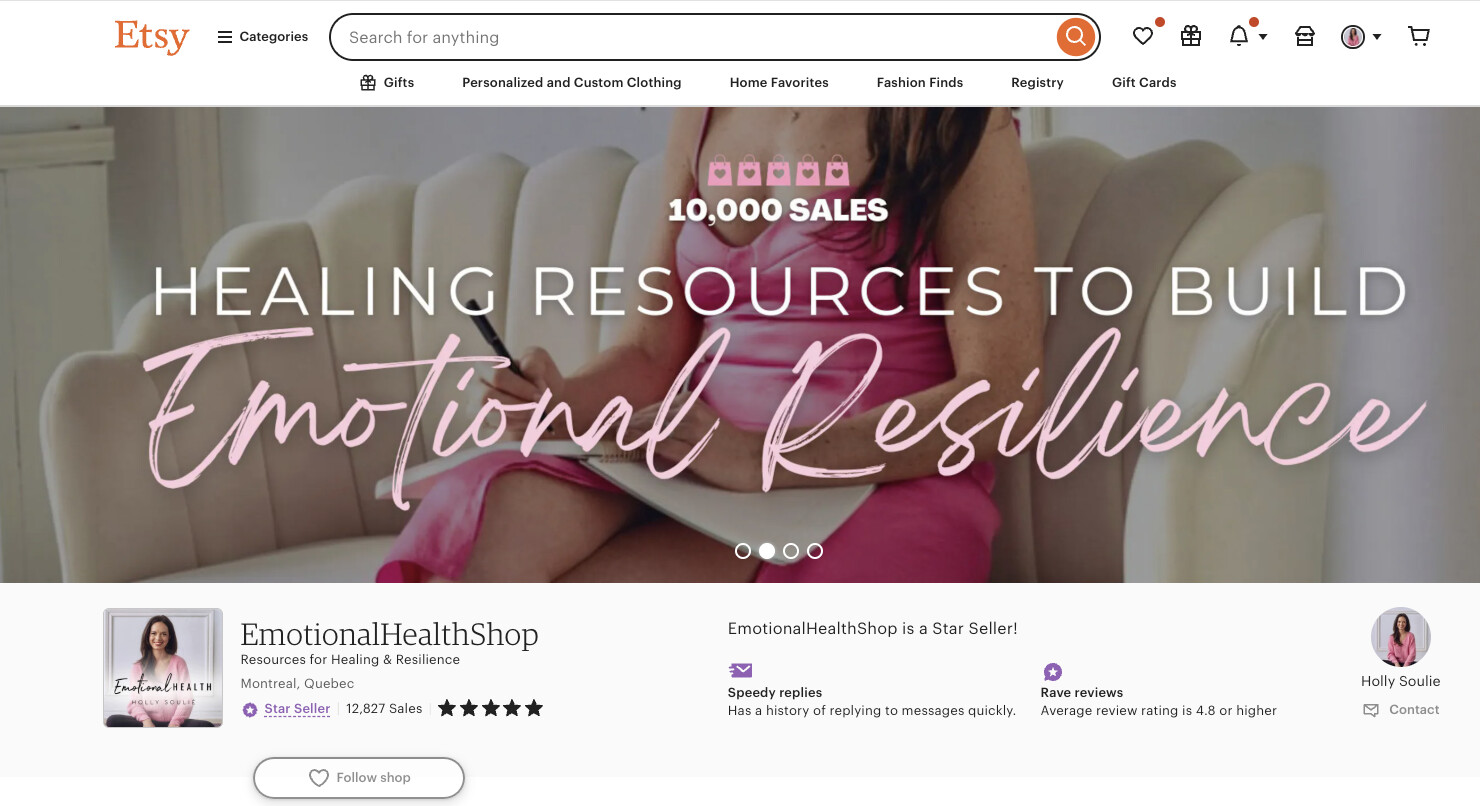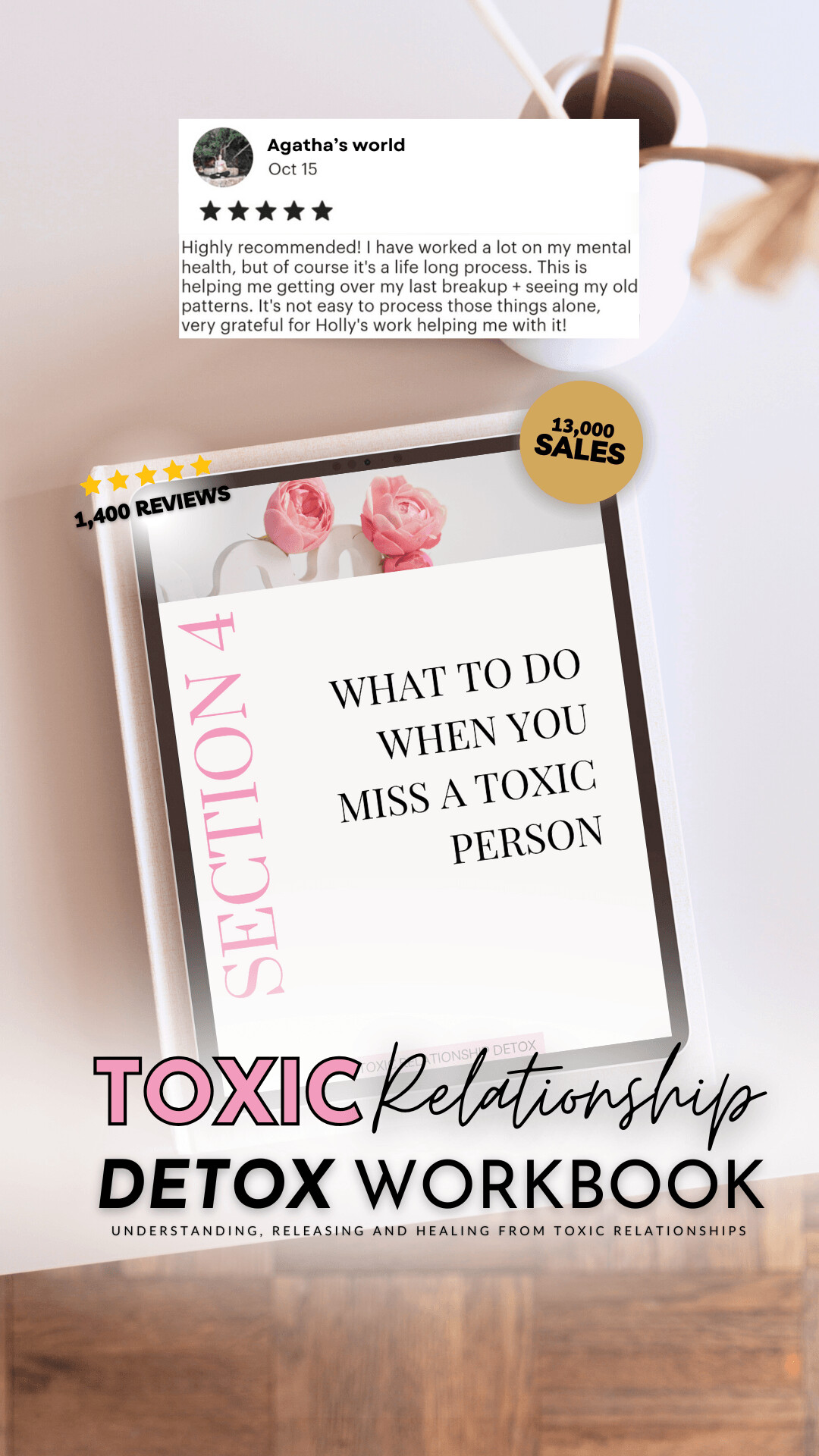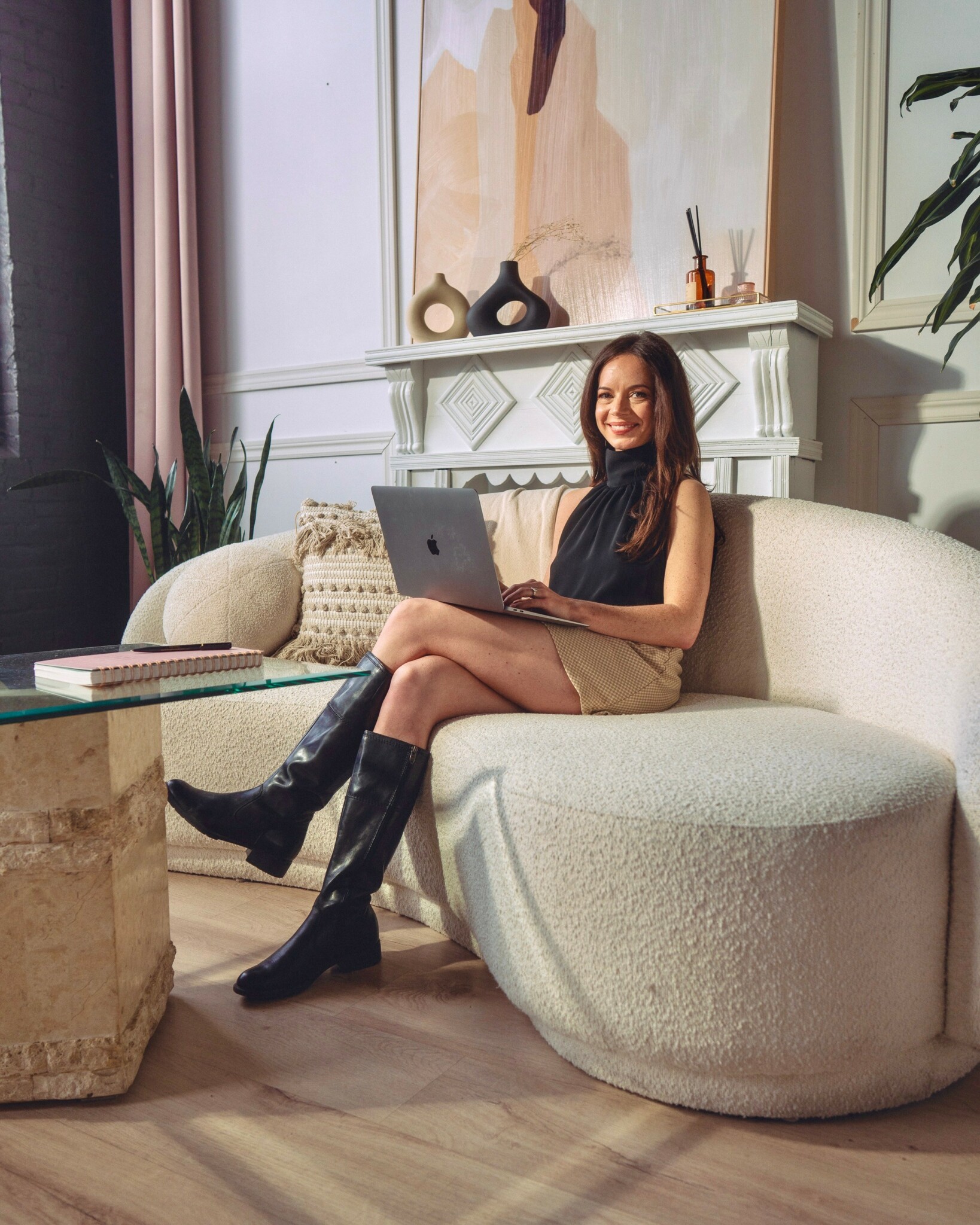We’re excited to introduce you to the always interesting and insightful Holly Soulié. We hope you’ll enjoy our conversation with Holly below.
Alright, Holly thanks for taking the time to share your stories and insights with us today. Let’s kick things off with talking about how you serve the underserved, because in our view this is one of the most important things the small business community does for society – by serving those who the giant corporations ignore, small business helps create a more inclusive and just world for all of us.
I started the Emotional Health Shop because I know what it’s like to feel completely lost in your emotions—like you’re drowning, and you don’t know how to come up for air.
I was 17 when my father was incarcerated. I felt so alone in my pain. There wasn’t anywhere I could go, and I didn’t have anyone to talk to at that point. A dad going to jail? Who could have possibly helped me with that? I was carrying grief, anger, guilt—emotions that felt too big for me, and I had no tools to process them.
That loneliness I felt is something I know so many others experience when life knocks them down. We are all part of this underserved community—whether we recognize it yet or not.
Emotional health is a life skill every human needs. But most of us were never given the tools. We’re taught how to read, how to write, how to succeed in work— But no one teaches us what to do when grief punches us in the chest. Or when guilt keeps us from setting a boundary. Or when we’re so anxious we can’t breathe.
Some people find their way to therapy. But many don’t. Some can’t afford it. Some don’t trust it. Some simply don’t want to unpack their entire life—they just need help getting through what they’re facing right now. And those who don’t often feel left out—like support and resources are only for those who choose therapy. They deserve tools, too. They deserve to feel part of a community that supports their emotional growth, even if their path looks different.
And some—especially sensitive, private people—would rather work through their emotions quietly, on their own terms.
When the pandemic hit, I saw just how deep this need ran. I had just launched my shop when the world shut down, and within weeks, I watched as people from all over the world began finding my resources. They were scared, grieving, overwhelmed—and realizing they had no idea how to cope. They needed tools—but they needed them at home, in private, and at a price they could actually afford.
That’s why I created the Emotional Health Shop—an online boutique where people can download digital workbooks and journals I personally wrote to help them build emotional health and resilience, from the comfort of their own space, for far less than the cost of a single therapy session.
Gentle, practical tools that guide them through guilt, anxiety, boundaries, self-worth—the everyday struggles we all face, but were never taught how to handle.
And as these resources reached more people, something beautiful happened. I watched this quiet, global community form.
Women sitting at their kitchen tables before work, journaling through their anger. Mothers learning how to set boundaries with their families—without guilt. Men, who might never step into a therapist’s office, finally processing their grief in the privacy of their homes.
People from all walks of life, across the world, realizing—“I’ve had the strength all along. I just needed the tools to access it.”
I think often of Ginny—who left a review after downloading my Codependency Cure Bundle. She wrote: “I just got this item, but I have started reading some of it, and it is going to be extremely helpful I can tell because it had me in tears. Thank you so much for putting information like this into the public.”
Her words are why I do this work. Because when people have access to these tools, when they feel seen and supported—they begin to trust themselves. They realize they can work through emotional challenges that no one ever taught them how to handle. They stop feeling alone in their pain and start feeling capable—part of a community of people learning to face life’s hardest moments with strength.
Therapists and psychologists see this too. Hundreds of counselors around the world purchase my workbooks and journals to support their clients—because they fill a gap that many therapists experience in their work.
A therapist can offer insight and guidance, but real progress happens in everyday life. In the moments between sessions—when someone is trying to stand firm in a boundary, or work through guilt after a hard conversation.
Therapists often tell me they need more tools to help clients keep moving forward outside the therapy room. That’s where my workbooks come in—offering clients something tangible they can return to, again and again.
And for those who will never step into a therapist’s office? These same resources offer a bridge into emotional strength that’s private, accessible, and theirs.
That’s what this work is about. It’s not just about workbooks. It’s about humans. It’s about helping people feel emotionally capable—whether they’re sitting across from a therapist or figuring it out at their kitchen table.
Because emotional health shouldn’t be a luxury—it’s a skill we all deserve.
And that’s what drives me every day. Knowing that somewhere—right now—someone is sitting with one of my journals, feeling their emotions fully, learning they can handle them.
And that, to me, is everything.

As always, we appreciate you sharing your insights and we’ve got a few more questions for you, but before we get to all of that can you take a minute to introduce yourself and give our readers some of your back background and context?
I’m Holly Soulié, a certified emotional intelligence coach and the founder of the Emotional Health Shop—an online boutique offering digital workbooks and journals designed to help people strengthen their emotional health, process difficult emotions and build lasting resilience.
This work is deeply personal to me.
When I was 17, my father was incarcerated and my world shattered. I was drowning in grief, anger and guilt but I had no idea how to handle any of it. I didn’t have the tools and I didn’t have anyone I felt I could turn to. There was nowhere I could go and say, “My dad is in prison—how do I survive this?”
I felt completely alone.
A few years later, still struggling to feel like myself, I attended a self-awareness bootcamp.
It was there, during an exercise, that I felt my anger fully for the first time. I had always seen anger as dangerous, something to suppress, but in that moment, I felt alive. It was the first time in years I recognized myself.
I left that weekend with something more than relief. I had found Holly again.
And I realized something that would change my life:
Feeling all of my emotions, even the hardest, ugliest ones, was the key to happiness and inner peace.
That was the turning point.
I realized emotions weren’t the enemy. They were the path forward.
They were not here to punish me.
They were here to move me.
I fell in love with emotions after that. I began to see that every feeling—anger, guilt, anxiety, even the really uncomfortable ones—was trying to tell me something.
Emotions are messengers. They show us what we need.
When we listen to them, they guide us toward clarity, self-trust and the life we actually want.
That understanding became the heart of my work.
I realized that while there were plenty of resources teaching people how to calm down or manage their emotions, no one was teaching us to love our emotions—to see them as wise, supportive and worth listening to.
So I started creating tools to fill that gap.
The Emotional Health Shop now offers digital workbooks and journals that help people work through the exact emotional struggles that tend to knock us down—guilt, boundaries, anxiety, codependency, self-worth, grief and more.
But my work is different.
It doesn’t just help someone solve a problem once.
It teaches people how to build a relationship with their emotions—how to hear what their feelings are trying to tell them and use that wisdom to move forward.
Because I believe every emotion, even the hard ones, is ultimately trying to lead you somewhere better.
When you know how to work with your emotions, they don’t hold you back.
They guide you home to yourself.
What sets my work apart:
It reframes emotions as helpful, not harmful. I teach people to see their emotions as messengers, not problems to fix.
I lead with my story. I share my own struggles inside my workbooks because I know what it feels like to be in the dark with no one to turn to. When I tell my story, it gives people permission to accept theirs.
It’s practical and gentle. My workbooks give people step-by-step guidance without clinical jargon or overwhelming processes.
It’s accessible. My resources are priced far below a single therapy session so that more people can get support.
Therapists trust it. Hundreds of counselors and psychologists around the world use my work with their clients because they see real progress happening between sessions.
What I’m Most Proud Of:
I’ve had over 13,000 people in nearly 100 countries download my resources, and I’ve received over 1,400 five-star reviews.
But what matters to me is what those numbers represent.
Each one is a person choosing to care for their emotional health and choosing to listen to themselves.
Lauren is one of those people. After buying my Original Self-Sabotage Workbook, she wrote,
”I love this shop, and the seller is incredible. She is so kind… and being able to have the courage to share her story helped me finally come to terms with some very hard feelings I had unknowingly been suppressing or not acknowledging so that they could be dealt with… I am truly grateful.”
And then there’s Paulina, who took my Empowered Emotions Course after struggling with clinical depression for decades. She told me,
”I went from being clinically depressed for decades to having virtually no major depressive episodes. My emotions were like a train wreck and now I feel like I’m in control of my life for the first time.”
Giving people tools like this—tools that can pull them out of that kind of suffering—is what matters to me most.
Because I know what depression can do to you. I know what it feels like to lose yourself.
And I know what it means to finally feel confident again.
I’m also incredibly proud of the fact that, even though I don’t have a psychology degree, psychologists, counselors and mental health professionals around the world rely on my workbooks to support their clients. Many are now part of my membership designed specifically for professionals, where they receive ongoing resources to use in their practice.
It means everything to me to know that the tools I created from my own experience are not only helping individuals but also expanding the impact therapists can have with their clients.
What I Want People to Know:
You don’t need to be in crisis to start working on your emotional health.
You don’t need to wait for therapy.
You don’t need to figure it out alone.
Your emotions are not the problem. They are the way forward.
When you know how to listen, they will lead you home.
The tools are here, ready when you are.

We’d love to hear the story of how you built up your social media audience?
Building my audience on social media has been a blend of consistency, education, and staying true to myself. From the very beginning, I focused on showing up with value. I’m a natural educator, so I shared as much helpful information as I could—always asking myself, “How can this post give someone a quick win today?” That mindset helped me build trust with my audience.
I also made sure to be myself. I didn’t try to follow trends or copy what others were doing. I had fun creating content, shared personal moments when it felt right, and let people get to know me over time—but never with an agenda. My goal was always to serve first.
Alongside organic content, I invested in Facebook and Instagram ads early on, which helped me get seen by the right people. I created custom audiences based on the type of person I knew would benefit from my work, and those ads were incredibly effective. They helped me grow quickly, and more importantly, the people who found me through those ads have stuck with me for over 5 years.
While ads are still a great tool, I’ve found that creating Reels has become almost like free advertising. Instagram pushes Reels so heavily that when you create content that resonates, it can reach far beyond your existing audience—without spending a dollar.
I also use Pinterest and blogging to drive traffic to my site and web shop. Pinterest can feel like its own universe, so I took a course to understand the platform and use Tailwind to schedule my content out a year in advance. I now have 5,000 Pinterest followers, and it’s a steady stream of new eyes on my work and consistent traffic to my web shop.
Education has been key throughout this process. I have a degree in marketing and over 10 years of experience in the field, which gave me a foundation, but I’m constantly learning—about branding, marketing, and what it takes to connect with people online. That willingness to adapt and grow has been essential, especially because social media is constantly evolving.
Today, I have 13,000 followers on Instagram, 5,000 on Pinterest, and a thriving audience that genuinely cares about what I create.
My advice to anyone starting out:
Be consistent. Show up, even when it feels like no one’s paying attention.
Be yourself. Don’t copy others. Your uniqueness is your strength.
Focus on service. Think about how you can help someone every time you post.
Have fun. People can feel it when you enjoy what you’re doing.
Build relationships. Your audience isn’t just numbers—they’re people. Connect with them.
Keep learning. Marketing changes fast. Stay curious, and keep growing.
It takes time, but if you lead with authenticity and value, your people will find you—and they’ll stick with you.
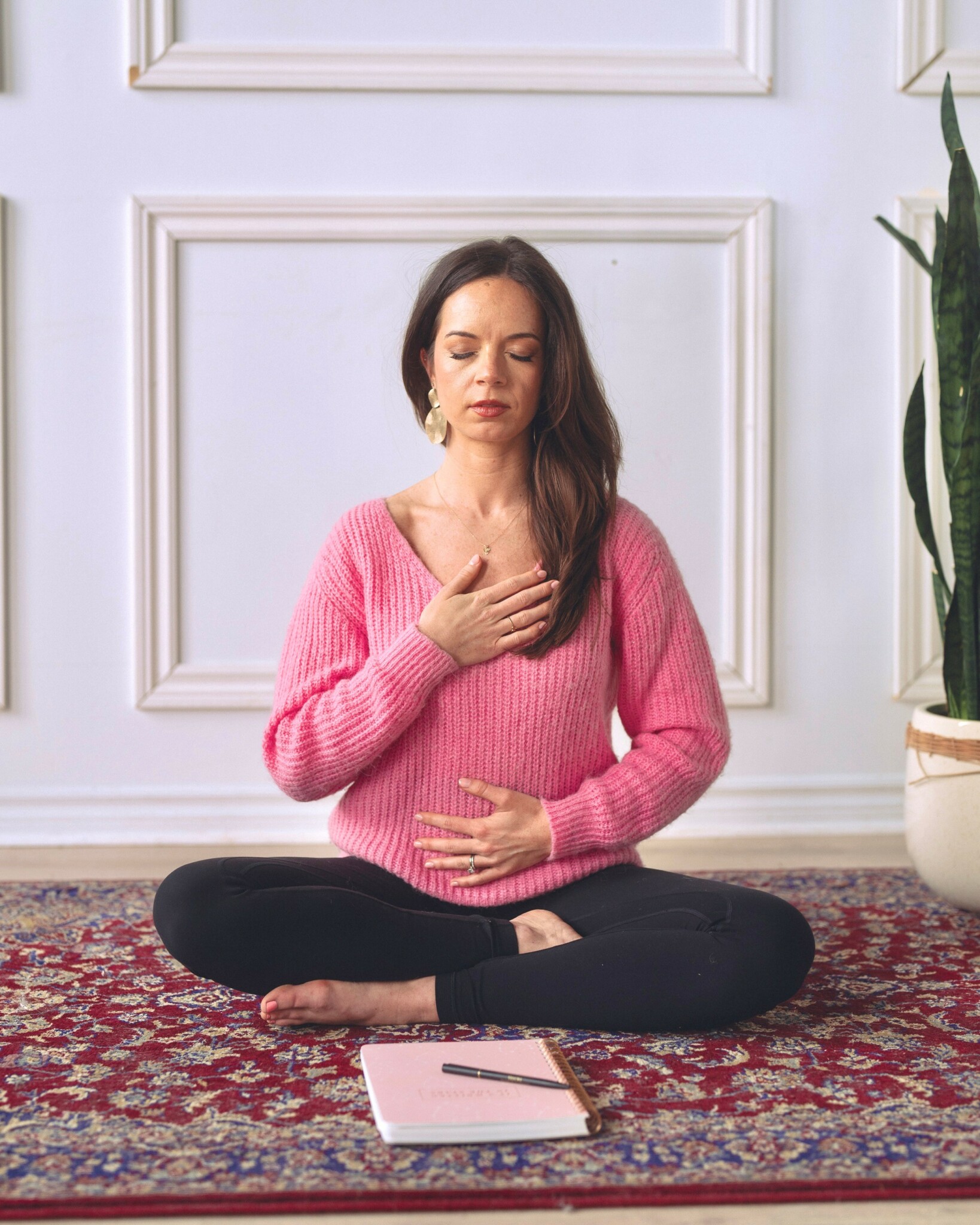
Do you sell on your site, or do you use a platform like Amazon, Etsy, Cratejoy, etc?
I sell both on my website and on Etsy, with Etsy being my primary platform. I started selling there in 2020, and it’s been an amazing platform for growing my business. Etsy has evolved so much over the past few years, and one of the biggest advantages is that they drive traffic for you. As a seller, you benefit from Etsy’s built-in audience and their investment in marketing, which means you’re not doing all the heavy lifting to get your products seen.
Their ad system is also incredibly effective. Once you’ve optimized your listings, Etsy ads can deliver a great return on investment, helping you reach even more buyers.
That said, there’s definitely a learning curve. The backend can be detailed and a bit overwhelming when you’re starting out, so understanding how to properly set up listings, tags, and ads is key to success.
One thing I’ve really appreciated is their Star Seller Program. I’ve been a Star Seller consistently for over three years since they started it, which recognizes sellers who offer excellent customer service, fast shipping, and consistently receive five-star reviews. The badge builds buyer confidence and helps your products stand out, which is especially valuable on a competitive platform.
As with any platform, there are downsides. Etsy’s customer support isn’t always as hands-on as I’d like when it comes to difficult customers, so sellers often need to rely on their own conflict resolution skills. However, in my experience, focusing on quality products and clear, kind communication with buyers prevents most issues.
Overall, Etsy has been a fantastic platform for me. Their fees are reasonable compared to other marketplaces, and the visibility they provide is invaluable.
For any creative entrepreneur looking to start selling, Etsy is a great place to grow (depending on your product!)—if you’re willing to take the time to learn the platform and stay consistent.
Contact Info:
- Website: https://hollysoulie.com
- Instagram: https://www.instagram.com/hollysoulie/
- Facebook: https://www.facebook.com/hollysoulie
- Youtube: https://www.youtube.com/@hollysoulie
- Other: https://www.pinterest.ca/hollysoulie/
https://www.tiktok.com/@hollysoulie
